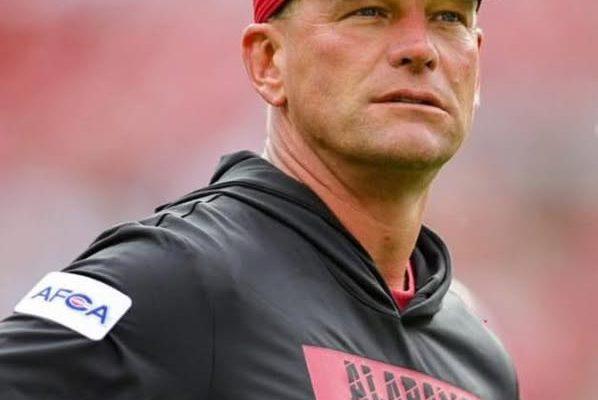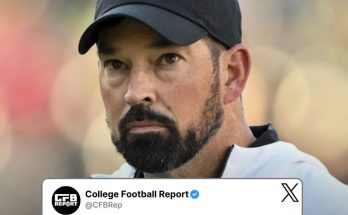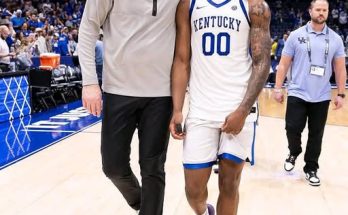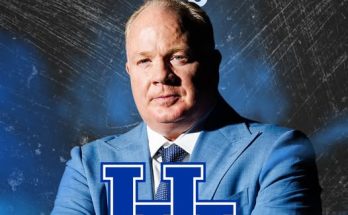Alabama football has always been synonymous with dominance, a program steeped in tradition, championship banners, and the aura of invincibility that Nick Saban built over nearly two decades. With the retirement of Saban and the arrival of new head coach Kalen DeBoer, the landscape of the Crimson Tide has shifted, and fans are beginning to see cracks in the foundation that once looked unshakable. The Tide are still one of the most talented programs in the nation, but the narrative that is unfolding in Tuscaloosa is one of uncertainty, and the pressing question that many are asking is simple yet complex: what is the Tide’s biggest problem? Is it DeBoer as the head coach, defensive coordinator Kane Wommack, quarterback Ty Simpson, or the offensive line that looks far from the dominant units Alabama fans grew accustomed to seeing? Each option comes with its own set of arguments, and untangling this dilemma requires a closer look at how the Tide have reached this crossroads and what it means for their future.
When Kalen DeBoer was hired, he brought with him an impressive résumé. He had proven his ability to win at Washington, revitalizing a program and leading them to the College Football Playoff with a high-powered offensive attack. The excitement in Tuscaloosa was understandable—here was a coach with modern offensive philosophies, one who could potentially take Alabama’s offensive efficiency to new heights. Yet the reality of following Nick Saban is more daunting than anything DeBoer has faced. It isn’t simply about calling plays or motivating players; it is about managing the weight of expectations that have been built over years of success. DeBoer is a great coach, but he isn’t Nick Saban, and some fans wonder if his leadership style and calm demeanor lack the edge and ruthlessness that made Saban’s Alabama such a feared juggernaut. Instead of building something slowly and methodically like he did at previous stops, DeBoer was dropped into a situation where the standard is not just winning, but winning convincingly and consistently. Early growing pains are inevitable, but Alabama fans are already questioning whether he can handle the SEC’s relentless grind, the recruiting battles, and the weekly chess matches against coaches who are studying every weakness in his schemes.
Then there’s the defense, historically Alabama’s calling card. Kane Wommack was brought in to coordinate the Tide’s defense, a move that looked solid on paper. Wommack had earned praise at Indiana and South Alabama, building defenses that played with discipline and aggressiveness. But the SEC is an entirely different animal, and Alabama fans are not seeing the suffocating defenses that once defined the program. Instead, there have been miscommunications, blown coverages, and a lack of that intimidating presence up front. Opponents are no longer fearing the Tide’s front seven the way they did when Jonathan Allen, Quinnen Williams, or Will Anderson were wreaking havoc. Some of this is a talent transition, as Alabama lost key veterans to the NFL, but much of it comes down to Wommack’s ability to adapt his system to the SEC level. If the Tide can’t consistently pressure quarterbacks or stop the run, the defense becomes a liability, which is something Alabama fans aren’t accustomed to seeing. Wommack is capable, but the question lingers: is he the right fit for a program where the defensive standard is almost impossible to live up to?
At the heart of the conversation is Ty Simpson, the quarterback who has been thrust into the spotlight at one of the most pressure-packed positions in college football. Quarterback play at Alabama has evolved over the years, moving from game managers in the early Saban years to superstars like Tua Tagovailoa, Mac Jones, and Bryce Young. These players not only won games but elevated the program with their poise and ability to deliver in clutch moments. Simpson, however, has struggled to reach that level. His arm talent is unquestionable, but decision-making, consistency, and the ability to handle pressure remain concerns. He shows flashes of brilliance, then follows them up with mistakes that stall drives or flip momentum to the opponent. The Tide’s offensive identity is in flux, and while Simpson is trying to shoulder the responsibility, it sometimes looks like the stage is too big for him. Fans are beginning to wonder whether he is the long-term answer or simply a bridge until Alabama lands its next elite quarterback through recruiting or the transfer portal. In a program where quarterback play often makes the difference between winning the SEC and falling short, Simpson’s struggles are magnified.
But perhaps the most glaring issue, and one that has haunted Alabama even in the final years of the Saban era, is the offensive line. Alabama used to churn out dominant lines filled with first-round picks and maulers who controlled the line of scrimmage. That dominance gave the Tide the ability to run the ball at will, protect their quarterback, and dictate the tempo of games. In recent years, however, the offensive line has not lived up to that standard. The current unit is inconsistent at best, struggling to create running lanes and allowing pressure that disrupts the passing game. A weak offensive line doesn’t just impact one aspect of the game; it ripples through everything. The quarterback doesn’t have time to operate, the running game becomes one-dimensional, and the defense finds itself on the field longer, wearing down as the game progresses. For Alabama, this might be the most fundamental issue of all, because no matter how talented the skill players are, the offense can’t function if the line is losing battles in the trenches.
When looking at the dilemma of DeBoer, Wommack, Simpson, and the offensive line, it becomes clear that these issues are interconnected. A head coach can only be as effective as his coordinators and players allow. A quarterback can only thrive with protection. A defense can only dominate if the offense sustains drives and avoids turnovers. Alabama’s struggles aren’t isolated to one person or unit; they reflect a transitional period for a program trying to maintain its identity while adapting to a new era. Some fans believe DeBoer will need time to recruit his type of players, especially linemen who fit his offensive system. Others believe that patience isn’t a luxury Alabama has, as the SEC is unforgiving and the margin for error is razor thin.
Critics will argue that the problem starts at the top. DeBoer has the résumé, but his ability to recruit at Alabama’s level is still unproven. Recruiting isn’t just about assembling talent; it’s about consistently winning battles against Georgia, LSU, and now even Texas and Oklahoma as they join the SEC. If Alabama can’t lock down five-star offensive linemen, defensive playmakers, and quarterbacks of the highest caliber, the Tide will begin to resemble strong but beatable programs rather than an unstoppable dynasty. Others place the blame more squarely on Wommack’s defensive struggles, noting that Alabama fans won’t tolerate mediocrity on defense no matter how explosive the offense becomes.
Meanwhile, Simpson’s critics argue that quarterback is too important a position to wait around on, especially with the transfer portal now reshaping rosters overnight. Alabama doesn’t have to be patient; they can go find someone proven if Simpson doesn’t show immediate improvement. And then there’s the offensive line, the most fundamental issue of them all. Without improvement there, none of the other questions matter, because games in the SEC are still won and lost at the line of scrimmage.
The defining dilemma for Alabama is not simply picking which of these issues is the biggest problem—it’s recognizing that the Tide’s new reality is one of multiple simultaneous challenges. Under Saban, the program was so airtight that weaknesses were rare and often masked by overwhelming strengths. Now, under DeBoer, every flaw is magnified, every mistake dissected, and every setback compared to the perfection of the past. This isn’t to say Alabama can’t return to dominance—they have the resources, the recruiting power, and the tradition to remain elite—but the path forward is less clear than it has been in decades.
If DeBoer proves he can recruit and adapt, if Wommack adjusts his defense to SEC offenses, if Simpson develops into a reliable leader, and if the offensive line regains its physicality, Alabama will once again be terrifying for opponents. But if these issues persist, the Tide may find themselves slipping into the category of “very good” rather than “truly great.” For a fanbase that expects championships, that distinction feels like night and day. The debate over whether the biggest problem is DeBoer, Wommack, Simpson, or the offensive line is really a debate about whether Alabama can sustain the standard that has defined them for so long. And right now, the answer is unsettled, leaving the Tide in the middle of an identity crisis that will shape not only this season but the direction of the program for years to come.



